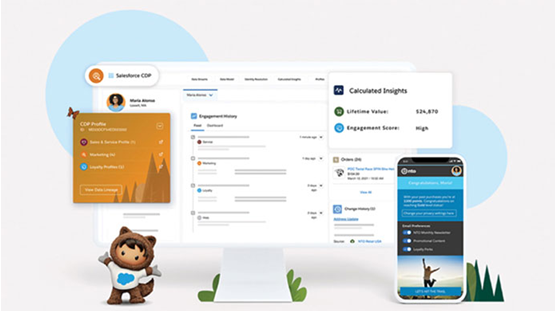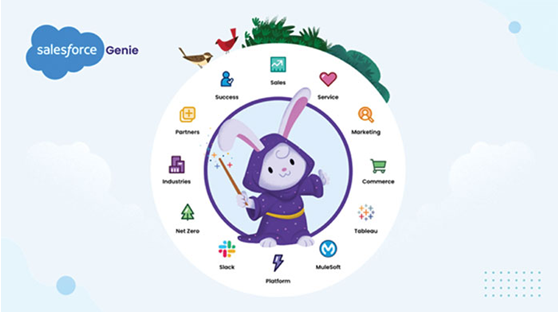Some benefits of Customer 360 are explained here:
- Consistent experience for customers: When you have an integrated CRM, then you get all the customer data in one place. So whether you are providing service to your customers or marketing to them, you have relevant customer data with you. You should not provide a new offer to a customer who is facing issues with one of their purchases. Likewise, customers won’t have to explain what they bought and their other details again and again to your service team in order to get service. Your service agents will have that information on their screens all in one place.
- Increase the productivity of employees: Your employees get a single, unified view of the customer, so they don’t have to spend time collecting information.
- Improve marketing spending: Running and optimizing marketing spending is easier with the correct data. You can track which customers are responding to which marketing assets and optimize accordingly
- Easier Collaborations: Collaborations among sales, service, marketing, and so on become easier with a unified customer profile.
We have discussed almost all the important products from Salesforce. But we haven’t yet touched upon Salesforce Data Cloud. Where does Salesforce Data Cloud fit in?
So far, we have talked about Sales Cloud, Service Cloud, marketing cloud, Tableau, and so on. We also talked about an integrated CRM called Salesforce Customer 360, which aims to bring together the customer data from different Salesforce or third-party applications and then create a unified customer profile. We also said that Salesforce Customer 360 is not a product but rather a vision: to have Salesforce as a single source of truth for customer data.
To understand Data Cloud, we need to understand another Salesforce product, which we haven’t yet talked about: Salesforce CDP, or Data Cloud for Marketing as it is known now. Salesforce CDP refers to the customer data platform product from Salesforce. The birth of Salesforce CDP started with a product known as Customer Audience 360 (CA360). CA360 was created with the initial vision of collecting data from different sources and making it available for marketing for user activations. Data collected from different systems would be collected from different sources, and then used to power the connected and personalized marketing experience. However, in the industry, the application that did this was called the customer data platform. Salesforce decided to change the name of the product to adhere to industry standards. SO CA360 was rebranded as Salesforce Customer Data Platform (CDP) without any meaningful change to the functionalities.

Figure 1.23: Salesforce CDP (source- https://www.salesforce.com/resources/articles/what-is-a-customer-data-platform/)
Salesforce again rebranded the Salesforce CDP to Salesforce Data Cloud for Marketing to specify that the product has a use case for marketing. The major features were still the same.
However, there is still a gap that needed to be addressed. Even though Salesforce was helping enterprises capture data from different sources and bring it all in one place, the data was not real-time. In today’s fast-paced digital world, data becomes stale very quickly. People check out a product on their mobile phone, later they again check in their tab and might make a purchase from their laptop later. All of this might happen over a period of a few hours. Companies need to make sure that they provide a consistent experience to users shifting devices or channels. For that, we need data in real-time or near real-time rather than data that is refreshed once a week or even once a day.
Here comes Salesforce Data Cloud. Salesforce Data Cloud was launched to power the customer 360 experience by making data in the Salesforce CDP product available to not just other products of the C360 suite of applications but also to other applications, in real-time. The keyword here is real-time. The data to which enterprises will take access will be real-time data. Salesforce Data Cloud is not only built for marketing but also for other use cases like product analytics, customer service, engagement, and so on.
Salesforce Data Cloud is supposed to revolutionize the customer data platform industry by making decisions accurate based on real-time data. We will delve into the details of the technology in the later chapters.

Figure 1.24: Salesforce Data Cloud (Source- https://www.avasoft.com/how-salesforce-Data-Cloud-empowers-customer-360/)
So if we have to sum it up in an equation, it will be something like this:
SF CDP + SF Data Cloud = Real-time Customer 360

